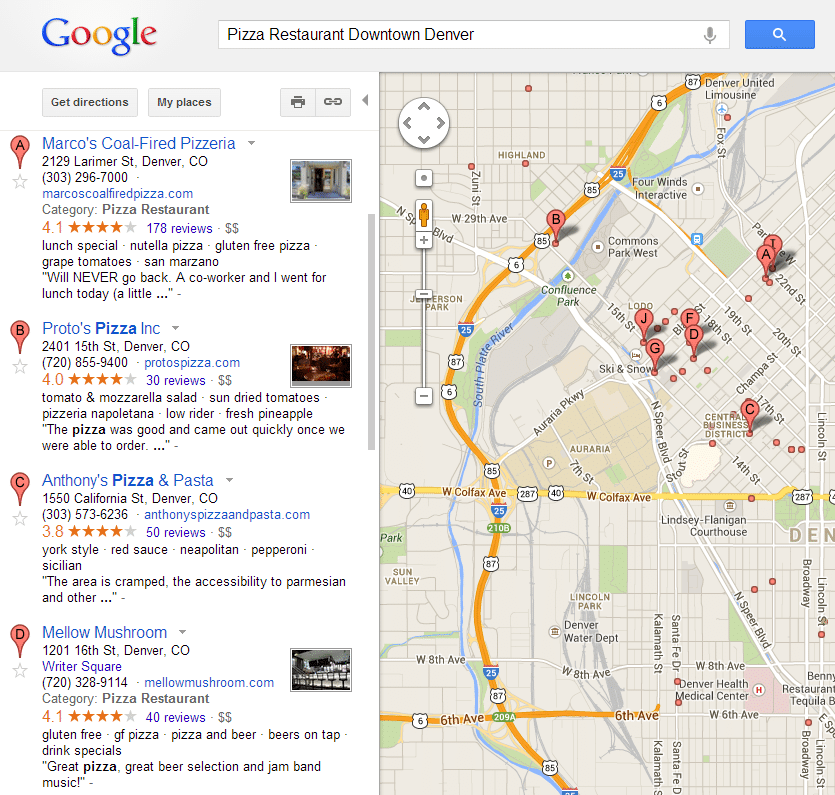
Online local listings continue to be highly visible in search results. Here is how to take control of the listings for your business, ensuring they are accurate and optimized.
Step I: Start with Google
With so many local listing directories, knowing where to start the process of claiming or creating your business’ local listing can be confusing. So it is helpful to recognize which search engine is the most popular. According to the comScore qSearch analysis, Google continues to be the dominant search engine, accounting for nearly 67% of all searches conducted in the U.S. with Bing (18%) and Yahoo (11%) lagging behind. So let’s start with Google.
The process of claiming or creating a local listing in Google is fairly simple and can be completed in about 15 minutes. Other directories also have the similar self-guided processes, so the content you use in Google can be applied to other local listing directories as well.
First, go to Google Places and either create a Google account or log in with an existing one. The account you use will be tied to the Google listing and can be used for other local directories, so do not lose this login info. If you ever need to update your local listings, you will also need this login. Once you log in to Google Places, you’ll be walked through the process of either claiming your listing that is already in Google’s system, or creating a new listing for your business. This process will likely include phone or postcard verification so Google knows you are the rightful business owner.
Along the way you will be prompted to verify or fill in the basic business information, like Business Name, Address and Phone, in addition to content fields like Business Description and Categories. These additional content fields can positively affect the ranking of your local listings, so use the creative freedom to choose content that both aligns with your core business offering and includes terms that local searchers would use to find your type of business. Eg: A local pizza restaurant that offers delivery and take-out should consider using the terms similar to “Pizza,” “Pizza Restaurant,” “Pizza Delivery,” “Take-out Restaurant” in their Business Description and Categories. In an effort to provide the best user experience for searchers, it is also important to complete the listing profile as much as possible, including additional photos and videos when applicable.
Step II: Expand Into Other Directories and Build Citations
The good news is that once you’ve gone through the local listing claiming or verification process with Google, you can apply your learning and optimized content to other directories. For a list of directories to consider, you can reference The Local Search Ecosystem, which illustrates how the directories influence each other – this can be overwhelming so just remember that Google should be your #1 focus.
Step III: Monitor Your Local Listings for Accuracy
Now that you have highly accurate and optimized local listings, continue to check back on them to ensure they remain this way. Local listing directories continue to share or pull in information from other online sources, which can cause data discrepancies even if you have claimed the listing – it’s just how the local listing ecosystem works. By monitoring your local listings, you can quickly combat any bad data that might appear on your listing.
By taking control of your local listings, you will be able to ensure the data listed is accurate, and the content you add to the listings will provide an excellent user experience for searchers, and potentially help your listing rank higher than your competition’s in the search results.
Image Credits:
12th St David
cc
Google Screenshot
About the Author
Nick Neels is an Account Director for the Local Listings Management (LLM) division at Location3 Media, built to improve the findability and performance of consumer and multi-unit retail brands through enterprise-level and local digital marketing solutions. Nick utilizes his background in analytics and customer experience management to improve his clients’ online performance, while also leading product development efforts to ensure L3M remains the leader and innovator in the local search space.


